The View from the Hill: L'Ostal Levant
A decade in the making, Louis and Charlotte Pérot's innovative approach to Cahors natural winemaking is lately coming to fruition.
Louis and Charlotte Pérot farm 3.5ha of vineyards near Puy-L’Evêque in the Cahors appellation, where they’ve made wine since 2012 as L’Ostal Levant. In 2015 they moved to a hillside farmstead at Alary, which they’re still renovating today. Neo-vignerons, the Pérots previously led careers in book sales and publishing in Paris, where they took an interest in natural wine circles in natural wine starting in the late 2000s. Louis Pérot obtained a BPREA degree at the Lycée Viticole in Beaune, and interned for Cahors vigneron Simon Busser, who loaned the couple their first parcel.
Today the Pérots’ unsulfited and unfiltered natural wines represent the forward-thinking vanguard of Cahors winemaking. Since 2016 the couple have planted many new grape varieties in efforts to diversify from the cherished local malbec. Seeking freshness, they sought north-facing slopes in the hills; this year the effort paid dividends, in minimizing what were, for lower-lying neighbors, near-total frost losses.
I first encountered the Pérots at the La Remise salon in Arles several years ago. I’ve since re-encountered the couple here and there on the natural wine salon circuit, often at Baptiste Cousin’s January salon in Anjou. I’ve long admired their wines, trim and athletic iterations of radical natural Cahors. A visit to their farm in late May proved the occasion to discover the couple’s impressive commitment to their neo-rural vision.
Quick Facts
Louis and Charlotte Pérot farm 3.5ha of vineyards. Some are situated around their home in Alary, others are in the adjacent commune of Duravel. The couple farm more-than-organically, and in choosing their vineyard sites prioritized the absence of neighbors.
The Pérots moved to the Lot with their children in 2012, seeking to start new lives as winemakers after careers in book sales in Paris. Charlotte’s parents already lived in the area.
While the majority of their production is malbec, the couple have a bit of mauzac and loin de l’oeil, and have also planted syrah, pinot noir, muscat à petit grain, chenin, and chamboursin. A row of table grapes makes its way into their malbec cuvée “Un Coeur Simple.”
Pérot’s touch in vinification is characterized by an early harvest; destemming more often than not; moderate macerations of ten days to two weeks, with pigeage; pressing in small vertical press; and barrel-aging. No sulfites are added at any stage; wines are never filtered.
Wines are released as Vin de France. Their first wine produced within the Cahors AOP will probably be released this year. (Unless they decide otherwise.)
ALARY THEN AND NOW
Posted inside the entry to Louis and Charlotte Pérot’s vat room, a few paces downhill from their home and aging cellar, is an aerial image of the farmstead at Alary as it stood in the 1990s, well before the Pérots moved to the site in 2015. It had been maintained as if it were the dawn of the 20th century, explains Louis, with a dumping area containing decades of rubbish occupying part of the grounds.
“The previous owner died of gangrene,” he says, widening his eyes in disbelief.
“Can you see him in this photo?” I ask, peering in.
“No. But you can see his mother. I’m not kidding.”
Pérot is fishing among steel cages in the cellar for bottles to bring to dinner up the hill. One steel cage contains bottles of apple juice, which the couple produce as part of a communal press, and which bears its own chic typographic label in the style of their wine cuvées. We have just returned from their windswept hill-top vineyards through the adjacent forest. As we walked Pérot found only a handful of girolles, because, he explained, “The kids have already been through here looking for them.”
Formerly a bookseller and an editor in Paris, respectively, the Pérots have brought a winning enthusiasm to their adoptive rural lifestyle. Their farmstead today is far from a gangrenous trash pit. It is a mixed agricultural idyll, replete with guesthouse, horses, a chicken coop, herds of sheep and goats.
If visiting Cahors in a frost vintage can feel like a drastic illustration of where local wine production went awry in the 20th century - low, flat, over-productive vineyards; monovarietal marketing; specialization in exclusively red wines - visiting the Pérots gives cautious hope about where it could be headed.
PARADISE ON EARTH
“You’ll see,” Louis Pérot had told me on the phone before my visit, “It’s paradise on earth.”
Initially I thought he meant the Cahors zone as a whole, which despite inaccessibility, constant mildew pressure, heavy rain, and frequent catastrophic frost, is indeed very picturesque and verdant. When I arrived at Alary, I soon realized he meant his own corner of Cahors. Pérot has further reason to be cheerful, because the couple found themselves just above the frostline this year, suffering minimal losses as their friends and neighbors below lost almost everything to two frost episodes in April.
“Until 2020, we had a rented parcel near Simon [Busser],” who frosted this year, says Pérot. “We didn’t keep it because of the other neighbors, for one, but also the frost. Even this year, we the frost didn’t miss us by much.”
In some regions, not having an existing family estate is a great disadvantage. Not so in Cahors, where vineyards remain reasonably accessible, averaging 13’500€ / ha in 2023. In establishing their estate, the Pérots were able to choose sites with climate change in mind.
“I wanted especially to be isolated,” recalls Louis. “And I wanted to be on the hill, north of the Lot, rather than south. And I wanted more north-facing sites. What's important to me is the freshness in the wine.”
Like Simon Busser, for whom Pérot interned in 2012 as part of his BPREA degree at the Lycée Viticole in Beaune, the Pérots are also diversifying beyond the regional focus on malbec. Since 2016, Pérot has planted pinot noir, chenin, chamboursin, syrah, and muscat, along with an experimental clone of malbec, known for smaller berries, lower production, and higher quality.
BUILDING THE CANDY STORE
When it comes to vinifying this wealth of grape varieties, Louis Pérot is the proverbial kid in a candy store these days, if the kid in question designed, built, and stocked the candy store. As erudite and intellectual as he is practical, he’s gives great thought to the vinification of each parcel and each variety - and to the story of the resulting wines. The Pérots have 3.5ha in production, from which, in 2023, they produced fifteen (!) cuvées.
“I think we’ll calm it down this year. Fifteen cuvées is a lot,” he muses after dinner. “But then, did we taste any wine that resembled another wine tonight?”
Pérot has a particularly nuanced view of his own wine range, thanks, in part, to his habit of working by intuition when it comes to destemming or whole cluster fermentation for most cuvées. (This is to say nothing of the unique perspective any vigneron has on his or her own growing season and fermentation calendar.) An outside taster like myself, encountering the L’Ostal Levant range arrayed on a table at a salon, can perhaps be forgiven for seeing a panoply of dark red wines, mostly malbec, with hard-to-follow fantasy names in similar typeface.
I still never hesitate to taste through Pérot’s wines whenever the opportunity arises, because they present a precision and a mineral heft that is unique in Cahors. The 2022 “Fioretti,” from over 40-year-old vines in Duravel, is in particularly fine form that evening, with sustained black fruit and a glittering salinity. “Un Coeur Simple,” too, is anything but, offering more stand-out old-vine complexity; it derives from a tiny parcel of côt (bordered by a row of table grapes) maintained by Alary’s previous occupants.
IN ALL BUT NAME
At L’Ostal Levant, the Pérots are constructing a successful neo-rural paradigm for Cahors natural winemaking - but you might not know it to look at their labels. Until this year, the Pérots have released all their wines from Cahors as Vin de France. In 2024, Pérot decided to submit his 2023 “Maasaï” to the Cahors appellation control board, where I am given to understand it passed the agrément - but just barely. The couple are jointly appalled by the process, to the point of finishing each other sentences.
“Part of the problem is having to go through the milieu of enologists,” observes Charlotte after dinner. “You have everyone who makes wine receiving counsel from people who don’t make wine.”
“People who are there only to secure things,” Louis adds.
“And to maintain a fixed idea [of an appellation’s wine], so no one proposes a new standard,” concludes Charlotte.
The Pérots first became interested in natural wine in Paris in the late 2000s, through wine retailers of the era. Louis cites Sébastien Lapaque’s 2006 book Chez Marcel Lapierre as a key catalyst, but the couple soon found more kinship with later, more radical generations of natural winemakers - those who don’t have to stop sulfitage, because they never started; those who begin with an awareness of the grave limitations of the appellation system.
In 2024, in a Cahors ravaged by frost, where conventional wine estates are folding en masse, these limitations couldn’t be clearer.
“We’ll see,” says Louis, of his 2023 “Maasaï.” “Maybe at the last minute I’ll decide to release it as Vin de France.”
Louis et Charlotte Pérot - L’Ostal Levant
Alary
46700 PUY-L’EVEQUE
FURTHER READING
Danis Bessières: Back to the Retrofuture
Simon Busser Hangs Up The Plow
Whither Cahors?
A nice mention and pic of Louis Pérot with our friend Jeff Coutelou at A March In The Vines.
Recollections of a March 2022 visit to L’Ostal Levant by Jonathan Kemp at Vanderbilt Wine Merchants.

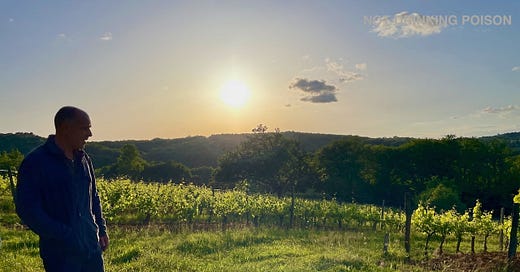


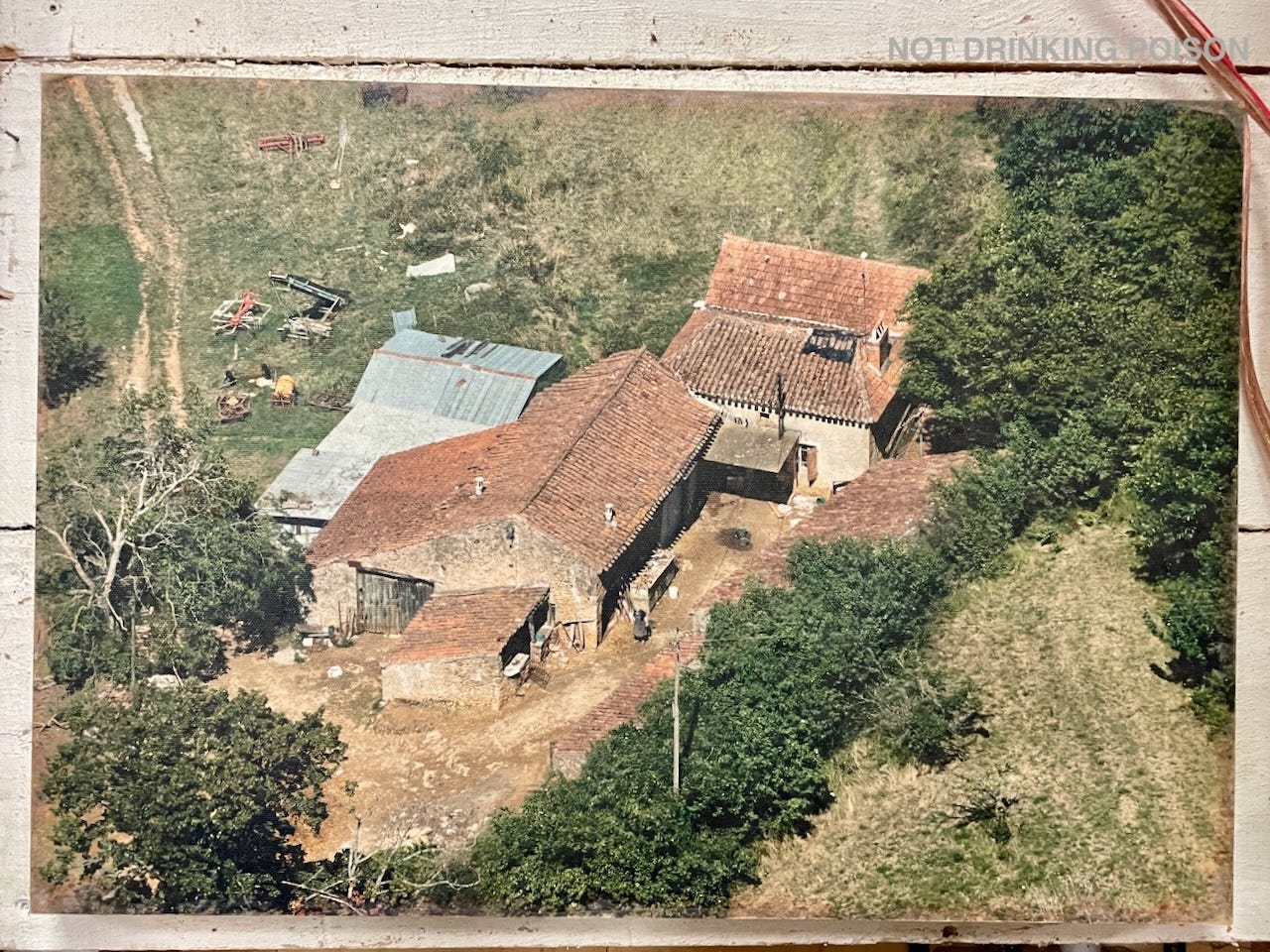
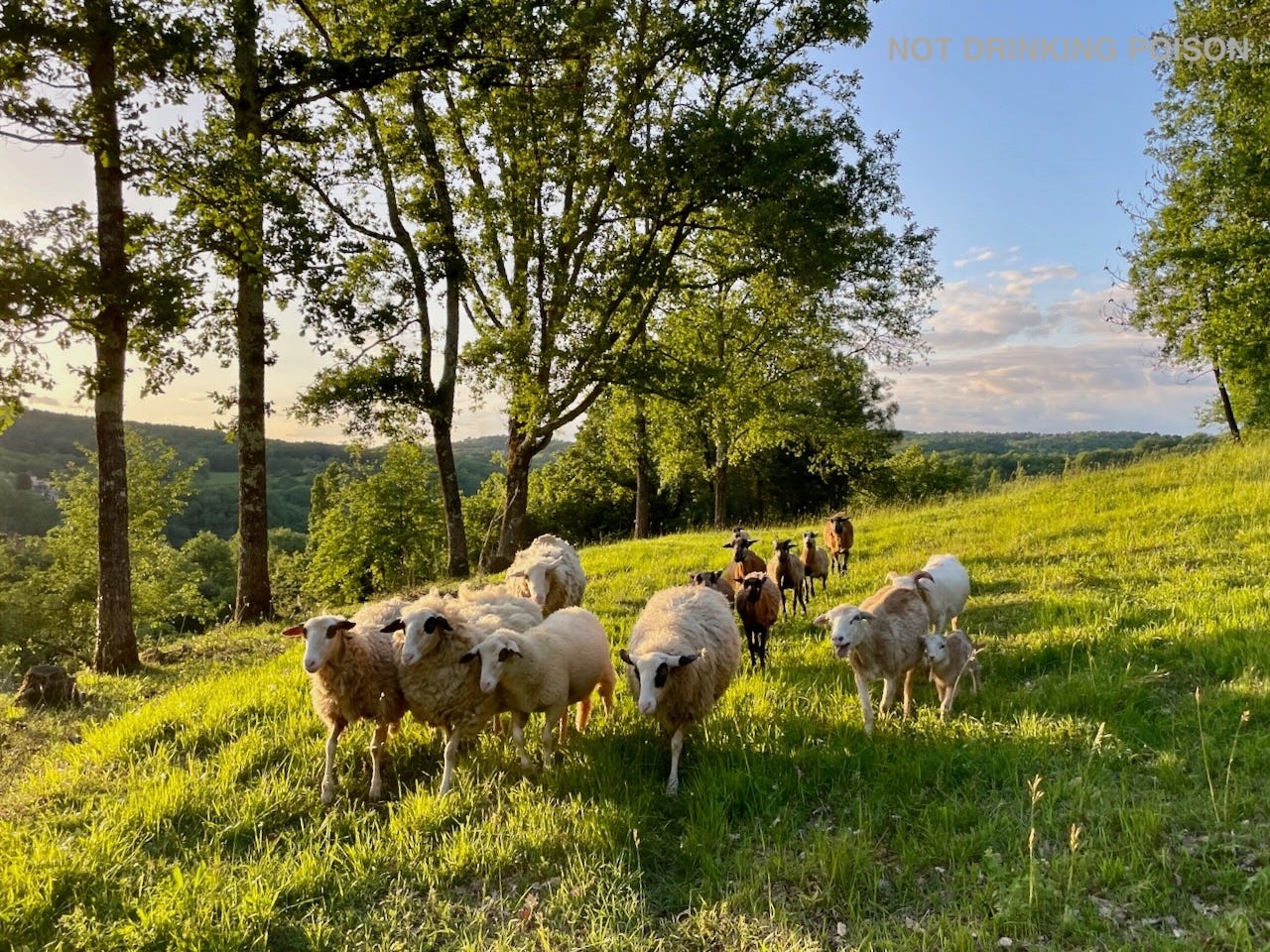
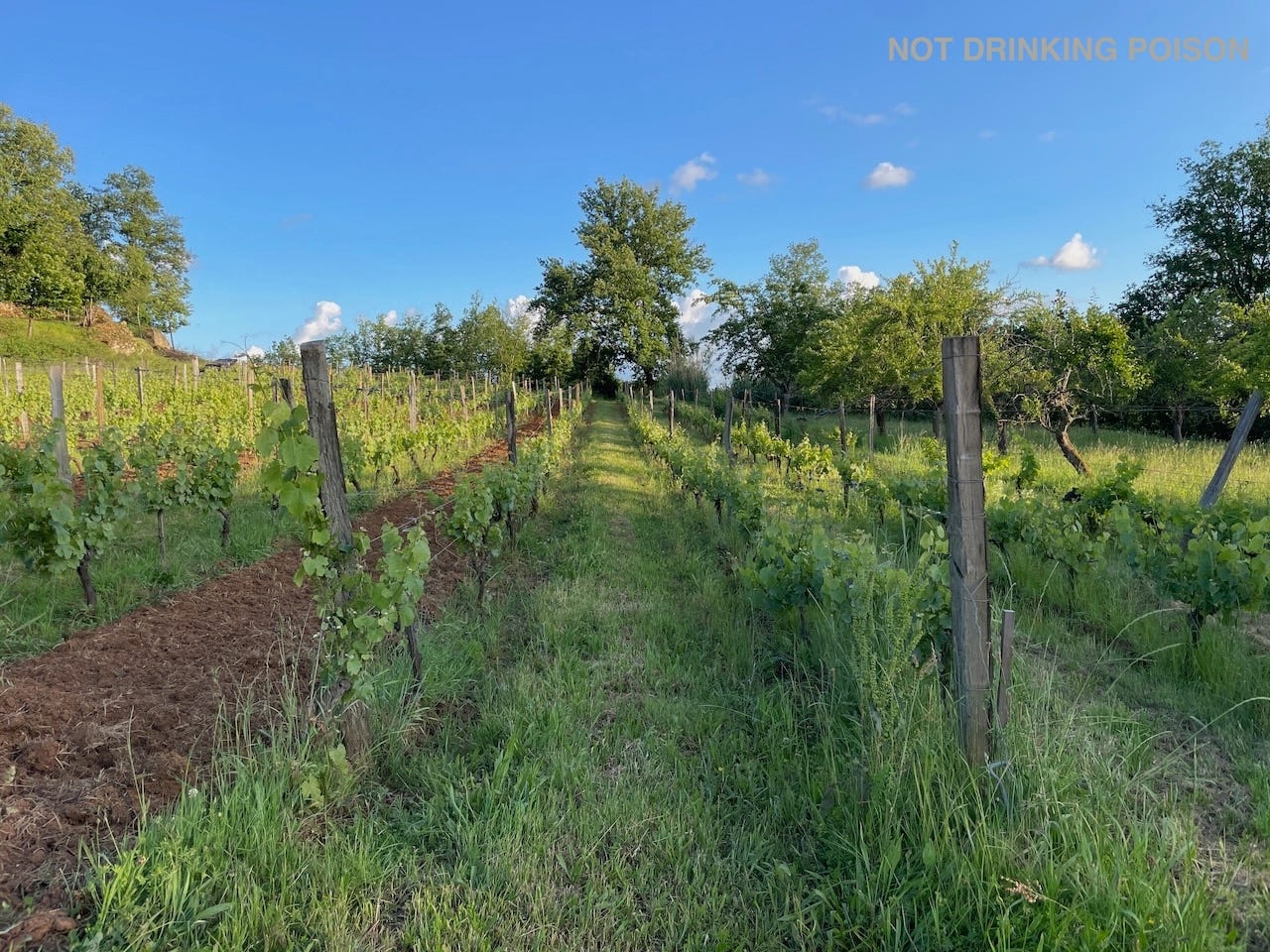
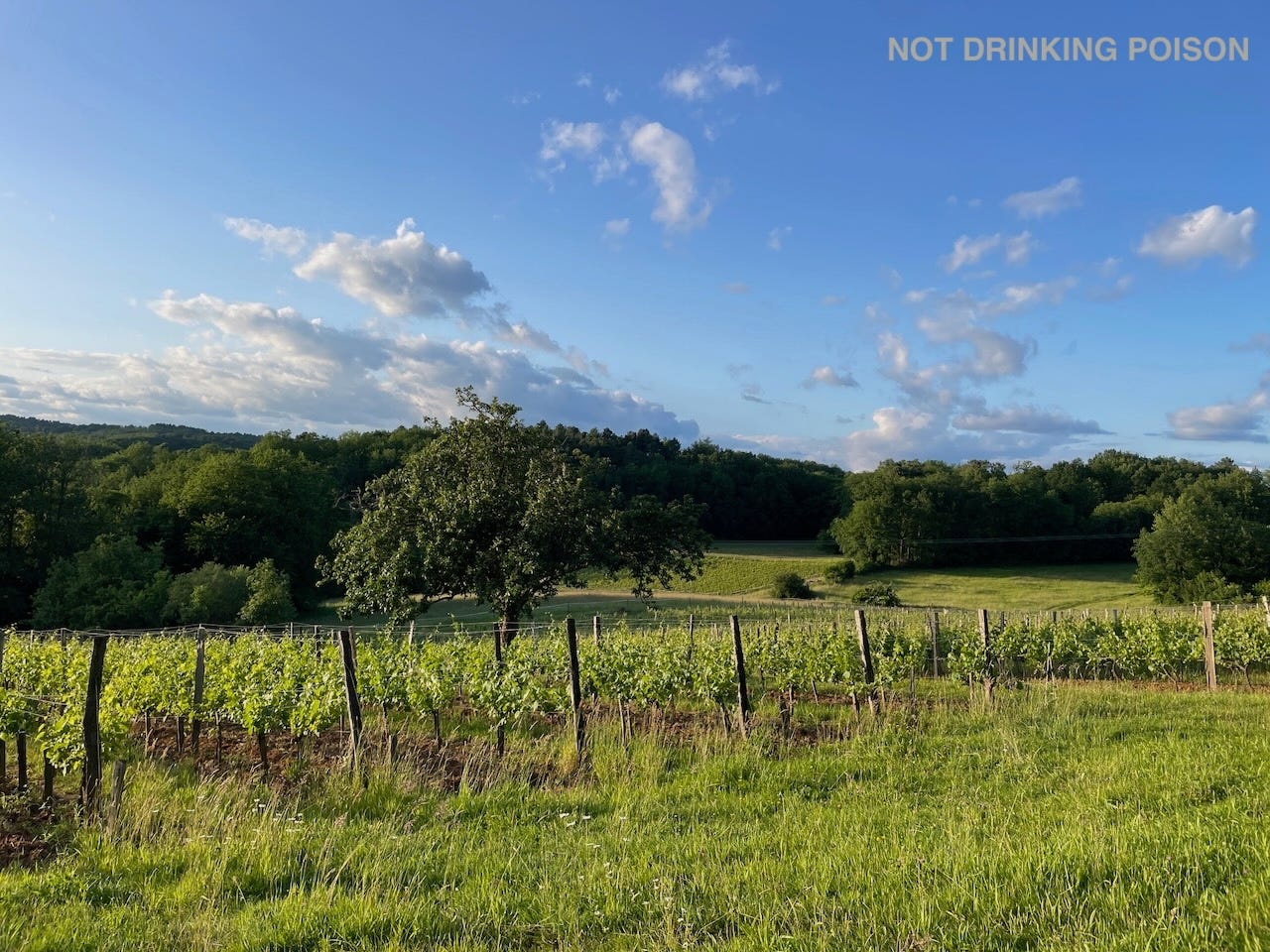

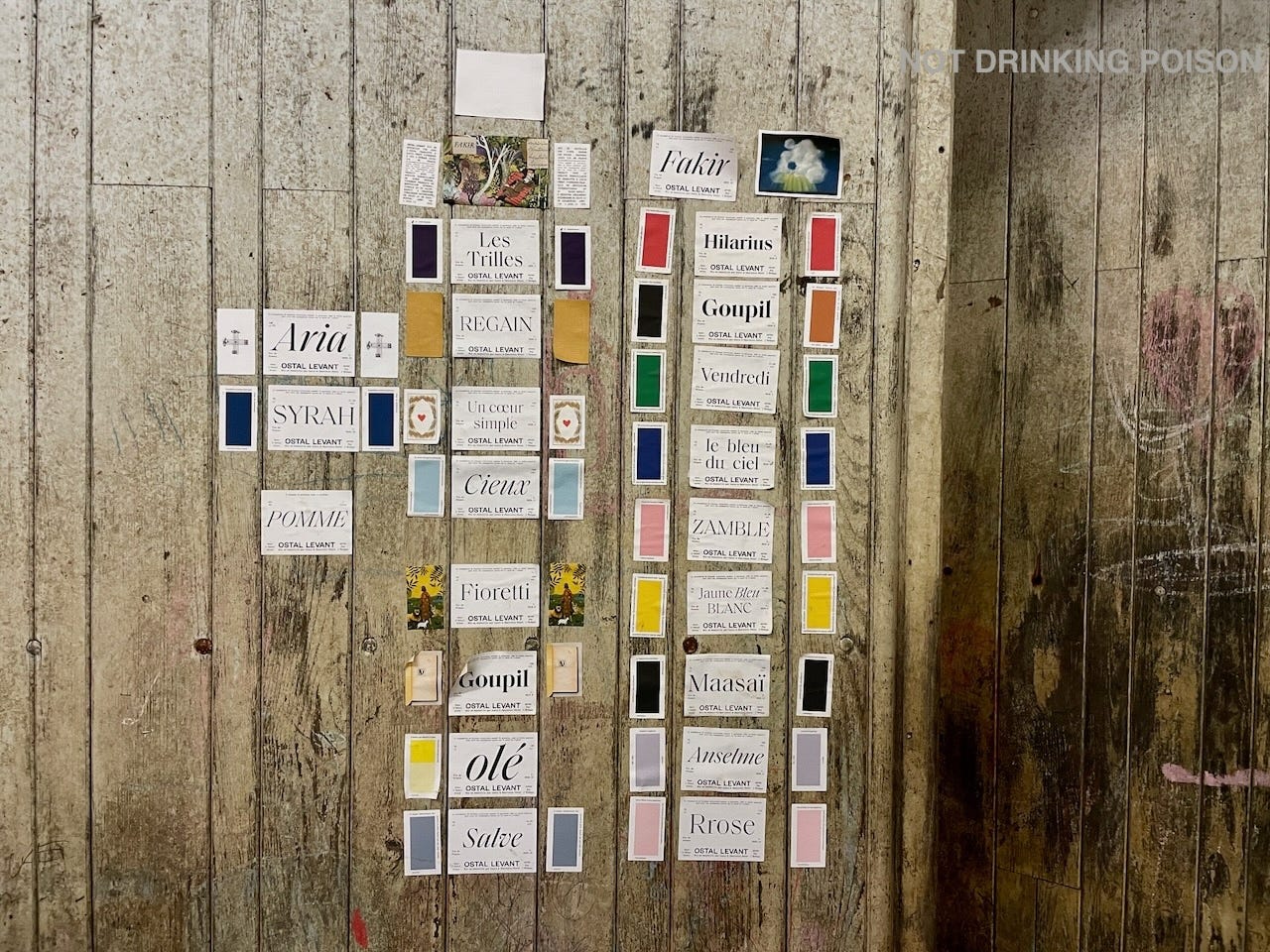


when tasting them at a salon some years ago I was quite thrilled, keen tasting them at home, returning from a paris visit this spring with a bottle if them which ended in the sink. being in my post horray phase on natural wine, for me the sensation of flaws is a major issue. what is stability, freshness an cleanliness in natural wine is my core issue. I like sashimi, but prefer it fresh. the selections of racine in tokio often recover my broken believe. i wish this publication would dive a bit deeper in sensoric realities. cheers.
And thanks for the link ❤